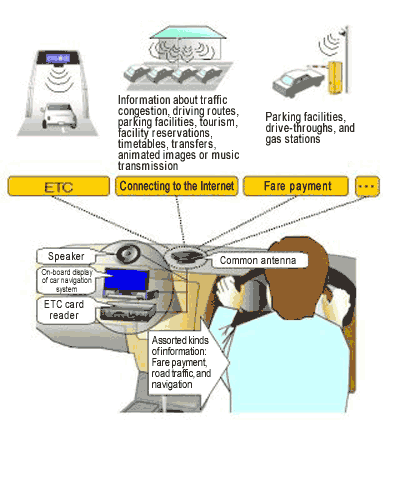

| (1) | To support safer, more comfortable transportation through communication among people, vehicles, and roads using information technology, we will continue to promote the establishment of devices to collect and supply information and other ITS related facilities1, R&D on various ITS services, and adoption of these services; and to actively promote the widespread use of ETC2. | |
| ||
| (2) | To improve the efficiency of investigations related to roads and to comprehensively promote efforts to improve the convenience of bus transportation and the like, in cooperation with the Road Transport Bureau and other organizations, we will foster cooperative measures which use buses to determine road usage conditions and which also provide information on bus location and arrival time, obtained in this way, for users to access via the Internet or cell phones. (New) | |
| (3) | To support the development of IT related industries while improving services to users, we will promote R&D on technologies for various kinds of public and private services in which a single unit of on-board equipment will be capable of using road-vehicle communications3for ETC, parking facility management, and other purposes. |  |
|
1 ITS related facilities: 2 Electronic Toll Collection system: A system that allows drivers to pay tolls on toll roads without stopping their vehicles. 3 Road-vehicle communications: In ETC, dedicated short-range communication (DSRC) at 5.8 GHz is used as the format for road-vehicle communications. | ||
| (4) | To help stimulate the economy, we will promote opening the use of optical fibers which have been installed for road management, along with the spaces where those optical fibers are housed, to private businesses; and we will promote development of a geographic information system (GIS) for roads4 in order to efficiently collect, manage, and supply information on road restrictions, disasters, and so on. | |
| ||
| (5) | To respond rapidly to road problems and disasters, we will promote the establishment and improvement of a network of optical fibers, etc., and work to streamline road management through the use of information technologies such as sensor systems. | |
| ||
|
4 Road geographic information system (GIS): A system for the unified management of road information on electronic maps. |
||
|
| |
All Rights Reserved, Copyright © 2004 Ministry of Land, Infrastructure, Transport and Tourism |